Members of the Town Planning Commission passed a resolution stating that they were not in favour of Deadman’s Island as a site for a proposed museum of Vancouver art, historical and scientific society. It was declared the Coal Harbour site was too inaccessible—Province: April 9, 1932
It continues to amaze me that Stanley Park has survived, despite all the attempts to develop it over the years.
In 1912, there was a push to “transform” Lost Lagoon into Grand Round Pond, with a surrounding museum, stadium and amusement park. There would be ornamental gardens, fountains a children’s playground, library and Georgia Street would be the “Champs-Elysees.”
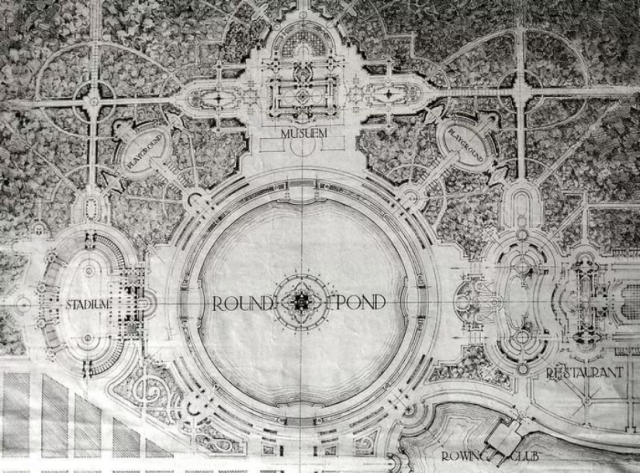
Fortunately, commonsense prevailed. Said Mayor James Findlay: “Thomas Mawson may be the finest architect in the world, but he cannot put Stanley Park back for us once it is destroyed.”
In the 1960s and ‘70s there were three attempts to turn Seasons Park—the 14 acres at the entrance—into a massive hotel and condo complex.
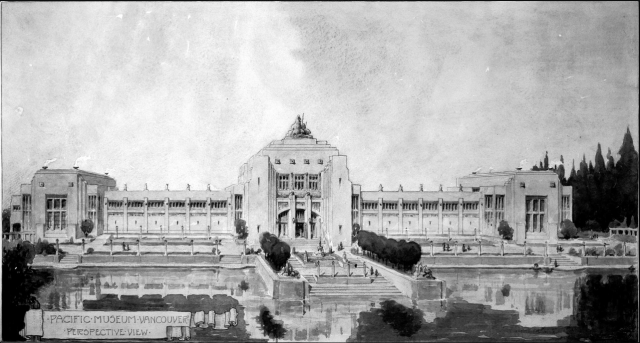
And in the early ‘30s there were plans to plop a castle-like museum building complete with citadel, on Deadman’s Island.
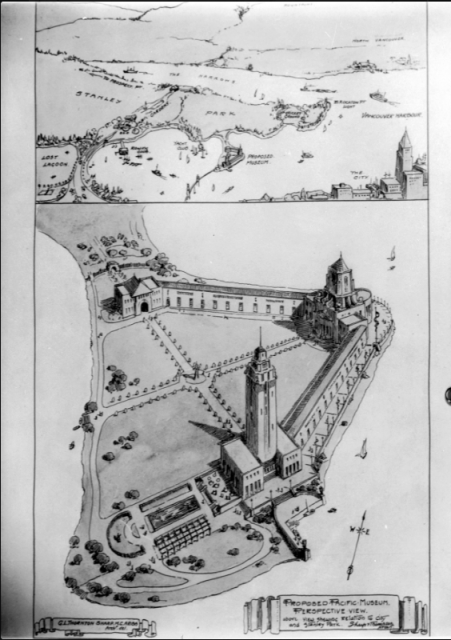
Measuring just 3.8 hectares, and attached to Stanley Park by a short causeway, Deadman’s Island, or Skwtsa7s (meaning island), has an amazing history. It was a battle site. It was an indigenous burial ground, where the dead were placed in wooden coffins and buried both in the ground and up in the trees. When small pox hit, it was used to quarantine the victims, and later bury those who didn’t make it. The land has also claimed British Merchant seaman, people from Moodyville, victims from the Great, and workers killed while extending the CPR line from Port Moody to Coal Harbour. One article says West Vancouver’s Navvy Jack is buried there.
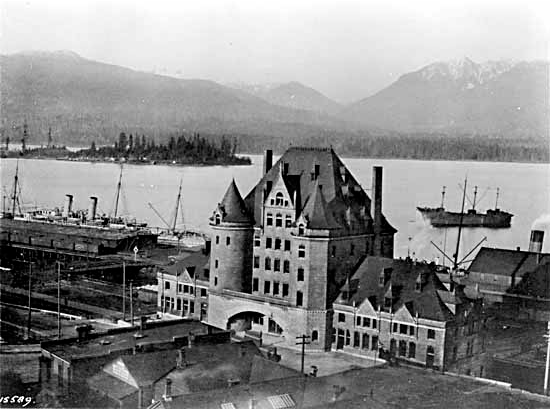
In 1930, the federal government leased the island to the city. Shortly after, the city commissioned Sharp and Thompson Architects to draw up designs for Pacific Museum. It didn’t get very far, and in 1944, became the site of HMCS Discovery Naval Reserve.
When the 99-year lease came up for renewal in 2007, Mayor Sam Sullivan tried to make it publicly accessible. He told the Globe and Mail he wanted a ferry service from downtown and a museum that could preserve and display the maritime heritage of native people.
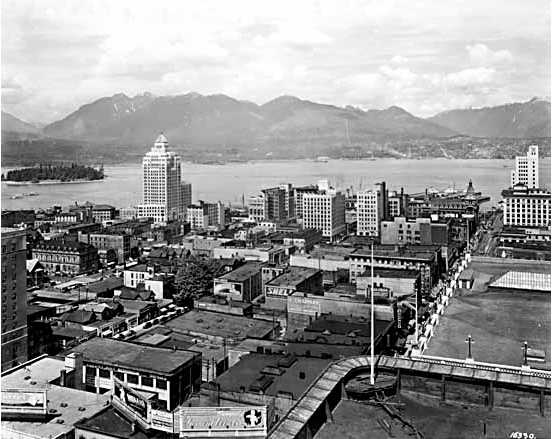
The Musqueam just wanted it back.
Except for an open house once or twice a year, which I always seem to miss it, the site remains off limits.
Sources:
- Jason Vanderhill’s Illustrated Vancouver
- Vancouver Public Library’s Special Collections
- Globe and Mail, April 27, 2006
- Vancouver Sun, December 28, 2018
- Vancouver Courier, March 30, 2010
© All rights reserved. Unless otherwise indicated, all blog content copyright Eve Lazarus.



6 comments on “Aborted Plans: Deadman’s Island”
Its nothing short of a miracle that developers were kept away from the entrance to Stanley Park. When you see the beach concession stands being replaced at public beaches by chain owned restaurants, you need to be even more grateful that they havent managed to get corporate claws into Stanley Park. Many thanks to everyone that has stood up to keep developers out of the park. Too bad the West End wasnt spared that fate.
I agree with Doug Parks how great it is that people stood up to keep developers out of Stanley Park and it’s too bad that the West End was not spared that. After moving to Nelson, BC in the early 50’s from the West End was so disappointed to discover the house we once lived in on 1836 Comox Street was no longer there but a high rise in its place. Sad but true. All in the name of progress I assume.
SWell all that maybe so but out off 1000 acres it adds up to less that the amount of park covered in Goose poop today. To try and sit anywhere thats not swamp, covered in invasive vines like the s er blackberries that snag at your ankles and clothing or covered in E-Colli infested goose droppings is impossible. Less open parkland increased each year as the parks board deems natural , ie not spending a penny in upkeeping even the sad sad 60’s era changing rooms and water pressure less showers at 1st/2nd& 3 third beachs. Espevially 1st with its time warp phoney blocking the view down Denman St. , club? Its a cafe too ?and where are the catcus ?chain ftom hell where all the food is from Sysco/ sameness medoirrith we put up with. Next time you by think in a” never been here but read the hype ” attititude and youll be calling 311 to tell them your sending them the bill for goose poop stained , well everything!
I lived in Greater Vancouver until 1990. So many times I gazed at Deadman’s Island without giving much thought to its history. Thanks for the summary and great photos.
Regarding the foiled visionary architect Thomas Mawson: I wonder if he took his wounded pride to Victoria? And left descendants?
Since moving here, I’ve noticed a ‘big picture’ developer called Merv Mawson. He was central to the 1970s conversion of onetime Broadmead Farms into a compelling executive subdivision in the Royal Oak area of Saanich. He also oversaw other developments on the Saanich Peninsula.
Speaking of which, privately owned James Island is located in the Haro Strait not far from Sidney. It’s about 100 times the size of Deadman’s Island. Once an industrial site for manufacturing and testing explosives for ultimately C-I-L, it was bought by cellular telephone magnate Craig McCaw. It’s got a Jack Nicklaus-designed golf course, a lodge that Seattle-based McCaw and his family can visit plus about nine groundskeepers and maintenance folk who live there full time.
James Island was named after James Douglas. About two kilometres from shore, it is outside the Douglas Treaty Lands and thus not part of any land disputes (at least for now) with the Tsawout First Nation.
McCaw paid $19 million for James Island in the mid-1990s. It’s assessed at four times that amount now. Any residential development would require vast remediation of toxins and possible live munitions barely covered by topsoil.
This article on the battle of Deadman’s Island gives some more interesting early history of the island. http://www.vancouversun.com/business/This+week+history+Vancouver+seethes+Deadman+Island+leased+American+industrialist/9510921/story.html
Note that the ‘island in the background in at least the last two photos is not Deadman’s island, it’s the part of Stanley park with Brockton point on it. Deadman’s island would have Stanley park behind it it photos from this direction.